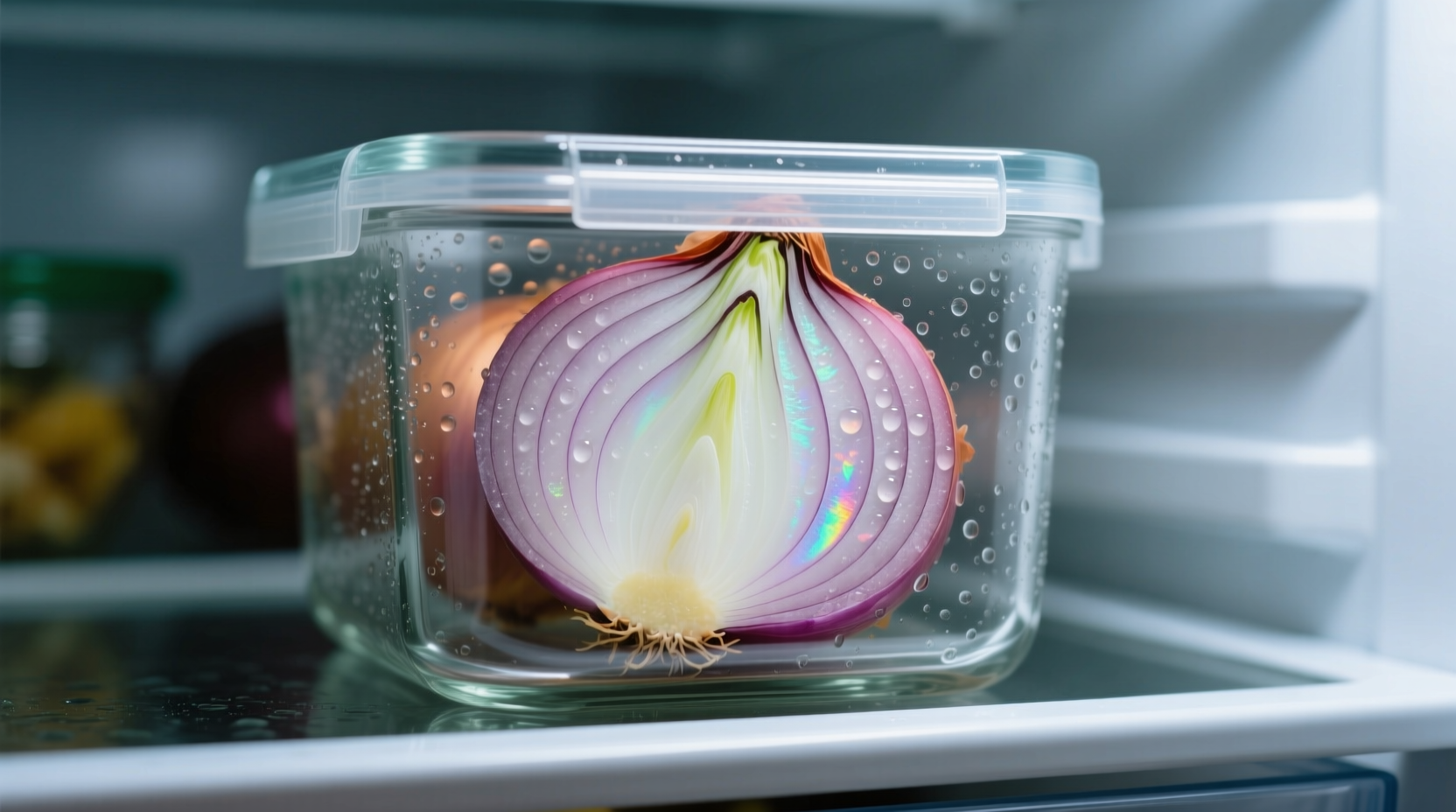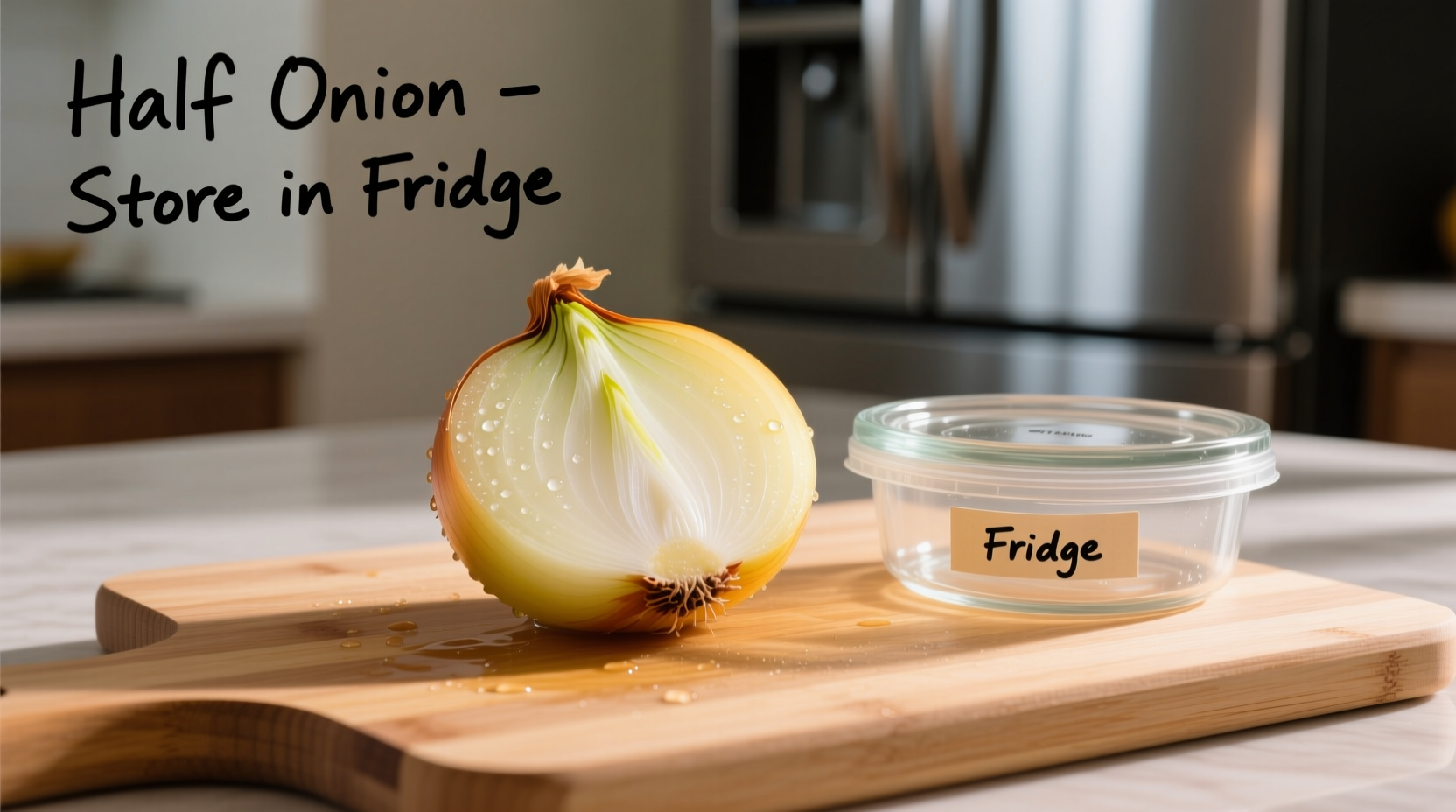Nothing ruins a cooking session faster than discovering your leftover half onion has turned slimy or developed an off smell. Proper onion preservation isn't just about reducing food waste—it's about maintaining flavor integrity for your next culinary creation. With the right technique, that partially used onion can deliver the same punch as a fresh one.
Why Proper Onion Preservation Matters
When you cut an onion, you rupture its cell walls, releasing enzymes that cause oxidation and accelerate spoilage. According to USDA food safety guidelines, cut produce enters the 'danger zone' where bacteria can multiply rapidly between 40°F and 140°F. Proper storage techniques interrupt this process, preserving both safety and quality.
| Preservation Method | Shelf Life | Best For | Flavor Retention |
|---|---|---|---|
| Refrigeration (properly wrapped) | 3-5 days | Raw applications | Excellent |
| Freezing (chopped) | 6-8 months | Cooked dishes | Good |
| Vinegar preservation | 2 weeks | Salads, salsas | Modified |
The Refrigeration Method: Your Go-To Solution
For immediate use within a few days, refrigeration provides the best balance of convenience and quality preservation. Follow these chef-recommended steps:
- Place the cut onion half cut-side down on a small plate (this minimizes exposed surface area)
- Wrap tightly with plastic wrap, ensuring no air pockets remain
- Alternatively, store in an airtight container with a paper towel to absorb excess moisture
- Keep in the main compartment of your refrigerator (not the door where temperatures fluctuate)
The National Onion Association confirms this method maintains optimal texture for raw applications like salads and salsas. Avoid storing near ethylene-producing fruits like apples, which accelerate onion spoilage.
Freezing for Long-Term Storage
When you need to preserve half an onion beyond the refrigerator's timeframe, freezing offers remarkable longevity without significant flavor degradation. The University of California Davis Food Safety Program recommends:
- Chop the remaining onion into uniform pieces for even freezing
- Spread pieces on a parchment-lined baking sheet and flash-freeze for 1 hour
- Transfer to a labeled freezer bag, removing as much air as possible
- Store at 0°F or below for up to 8 months
Unlike many vegetables, onions don't require blanching before freezing. The frozen pieces work perfectly in cooked dishes like soups, stews, and sauces—simply add them directly from the freezer.

Avoiding Common Onion Preservation Mistakes
Many home cooks unknowingly compromise their onion's quality through these errors:
- Storing cut-side up - Increases surface area exposed to air, accelerating spoilage
- Using regular plastic bags - Traps moisture that promotes bacterial growth
- Keeping in the original mesh bag - Provides no protection against odor transfer
- Storing near strong-smelling foods - Onions readily absorb surrounding odors
According to FDA food code guidelines, proper vegetable storage containers should maintain humidity levels between 80-90% while allowing minimal air exchange—critical for preserving onion quality.
When Your Preserved Onion Has Gone Bad
Even with proper storage, onions eventually spoil. Discard your preserved onion if you notice:
- Darkened or blackened areas on the cut surface
- Slippery or slimy texture
- Strong ammonia-like odor (distinct from normal onion smell)
- Mold growth in any color
The USDA Food Safety and Inspection Service emphasizes that when in doubt about produce safety, "when mold appears on high-moisture foods like onions, invisible roots can penetrate deeper than visible—discard the entire item."
Pro Tips for Maximizing Onion Freshness
Professional chefs employ these advanced techniques for optimal onion preservation:
- Use glass containers instead of plastic to prevent odor absorption
- Place a slice of bread in the container to absorb excess moisture
- Store red onions separately from white/yellow varieties (they have different moisture contents)
- Keep the root end intact when storing half an onion—it contains natural preservatives
For those following meal prep routines, consider investing in vacuum sealing technology. Studies from the National Center for Home Food Preservation show vacuum-sealed onions maintain quality 30% longer than conventionally stored counterparts.
Frequently Asked Questions
Can you store half an onion without refrigeration?
No, cut onions should always be refrigerated. At room temperature, cut onions enter the food safety danger zone (40°F-140°F) where bacteria multiply rapidly. The USDA recommends refrigerating cut produce within two hours for safety.
Does wrapping onion in foil preserve it better than plastic wrap?
No, aluminum foil can react with onion compounds, creating off-flavors. Plastic wrap creates a better moisture barrier. For optimal results, use food-grade plastic wrap directly contacting the cut surface, then place in an airtight container.
How long does frozen chopped onion last in cooking?
Frozen chopped onion maintains cooking quality for 6-8 months when stored at 0°F or below. While safe indefinitely, flavor and texture degradation becomes noticeable after 8 months. For best results, use frozen onion directly in cooked dishes without thawing.
Why does my preserved onion taste stronger than fresh?
As onions age in storage, sulfur compounds concentrate, creating a sharper flavor. To reduce this effect, rinse preserved onion under cold water before use, or soak in ice water for 10 minutes to mellow the flavor profile while maintaining texture.











 浙公网安备
33010002000092号
浙公网安备
33010002000092号 浙B2-20120091-4
浙B2-20120091-4